Uffizi Diffusi arrives in Pietrasanta: sketches and self-portraits on display
For the first time, the Uffizi Diffusi project comes to Versilia , and it does so with an exhibition that focuses on the... ideas of artists. In fact, the Florence-based museum comes to Pietrasanta at the Museo dei Bozzetti in the Complesso di Sant’Agostino with the exhibition Lo sguardo e l’idea, which is also the last exhibition in the Uffizi Diffusi series scheduled for 2022. The exhibition, curated by Monica Alderotti, Chiara Celli and Vanessa Gavioli, runs from November 19, 2022 to February 19, 2023. The three curators have placed in dialogue a large nucleus of sketches preserved in the Pietrasanta museum, with the self-portraits of the artists who made them: from the “gaze,” therefore, that the authors turn toward themselves, we observe the “idea” that springs from their hand. The self-portraits come from the artists’ collections and are twelve in all, just as twelve is the number of artists on display, in a roundup from the twentieth century to the present day. The names are all from artists who worked (or still work, as in the case of the only living artist on display) in the workshops of Pietrasanta and its environs: Francesco Messina, Costantino Nivola, Ugo Guidi, Piero Consagra, César Baldaccini, Arturo Carmassi, Marcello Tommasi, Dani Karavan, Niki de Saint Phalle, Jean Michel Folon, Igor Mitoraj, and Helidon Xhixha.
There are two rooms of the exhibition, one set up in the Sale Putti and one in the Cloister Chapter, in chronological order: first the masters of the twentieth century, then those who are contemporary or otherwise closer in time. In all, the exhibition counts the presence of thirteen self-portraits, nineteen sketches and two sculptures. The journey set up by the three curators suggests the idea that the representation ofphysical exteriority, of which we find expression in the self-portraits of artists as far back in time as Messina, Nivola, Guidi or Carmassi, in its dealing with the difficult task of giving form to the multiplicities of the self becomes increasingly labile: Thus, the verisimilitude of physiognomy, still present in the lithographs of Pietro Consagra and Francesco Messina, disappears in the sketches of César Baldaccini, in which the image is deformed, and in the silkscreens of Niki de Saint Phalle, an abstract universe of shapes and colors, until we arrive at the singular self-portrait of Jean Michel Folon, a watercolor that speaks of the multiplication of identity, of the one who becomes one among many and all the same, to arrive at three-dimensional self-portraits such as that of Igor Mitoraj and Marcello Tommasi, both inspired by classical culture, and Helidon Xhixha, a work that becomes almost abstract and in which the viewer is mirrored in the artist’s gaze until he or she gets lost.
The sketches presented in the exhibition are arranged along a time span of exactly one hundred years: in fact, they range from Francesco Messina, who arrived in the city in 1922, to the works of Helidon Xhixha, who works in the area today.
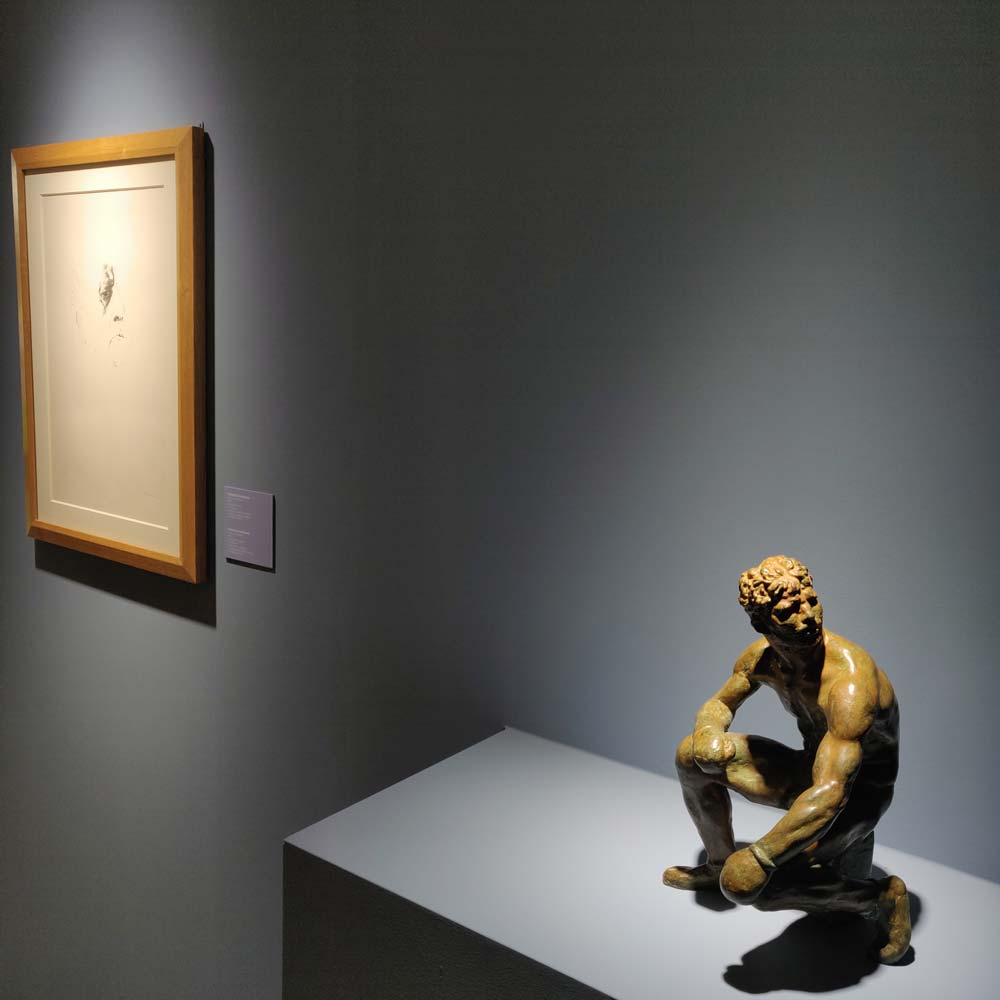
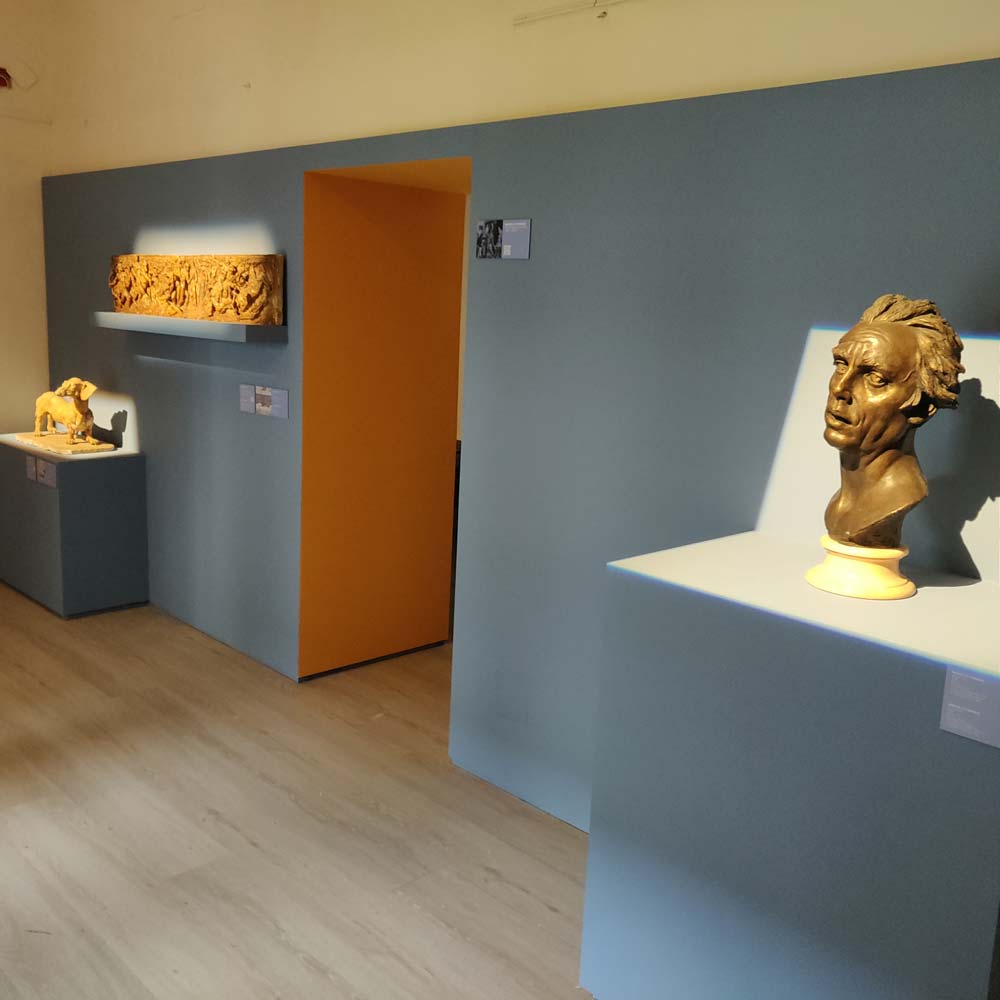 View of the
View of the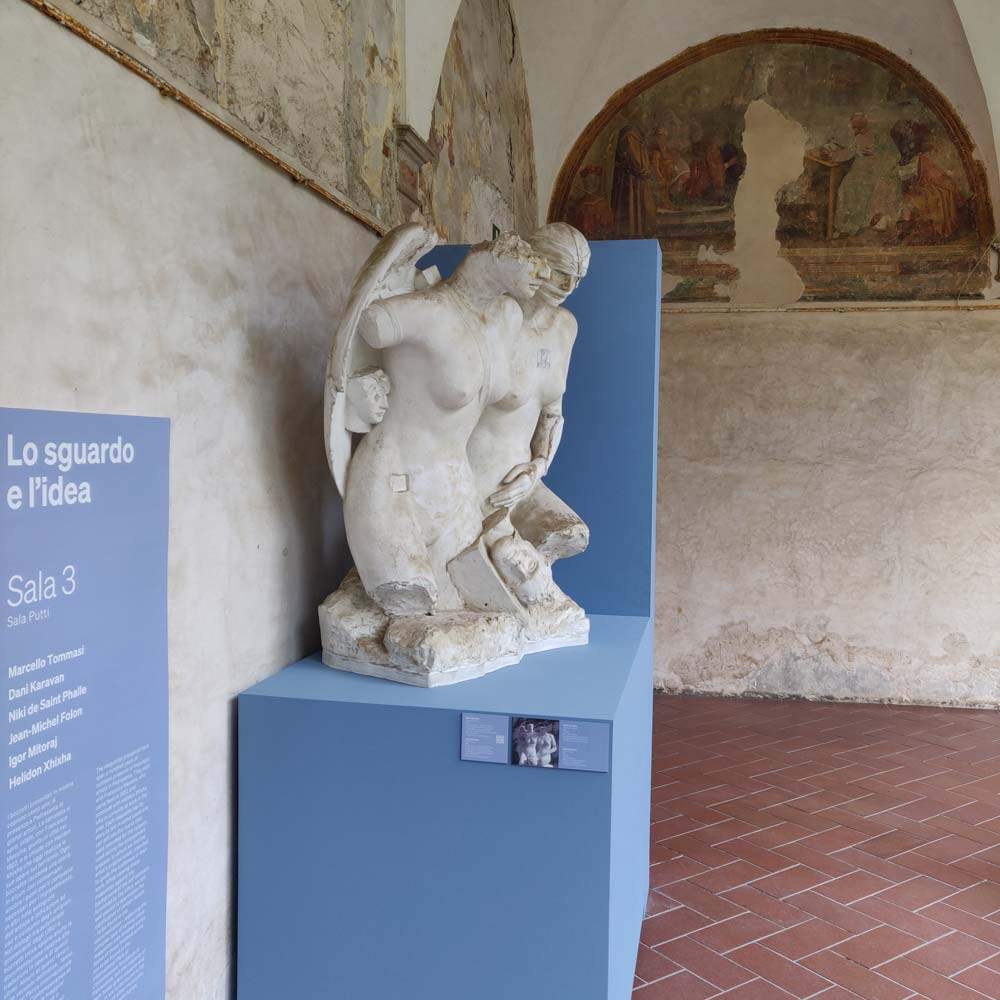 View of the
View of the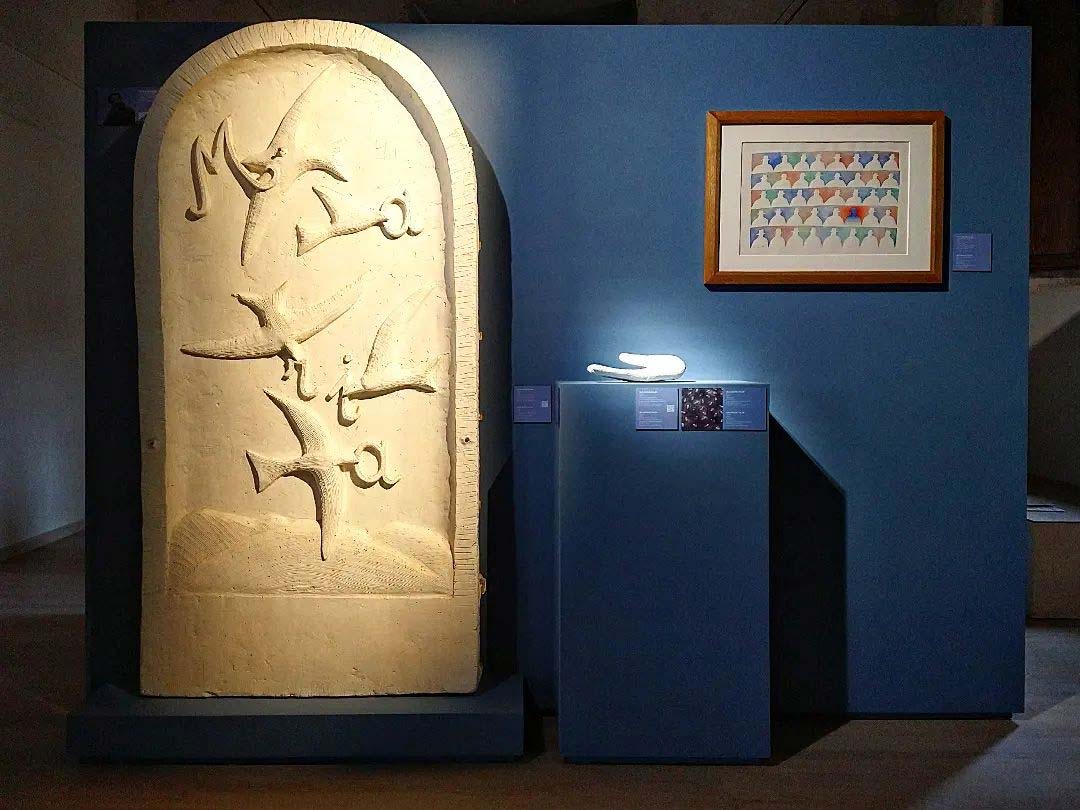 View of the
View of the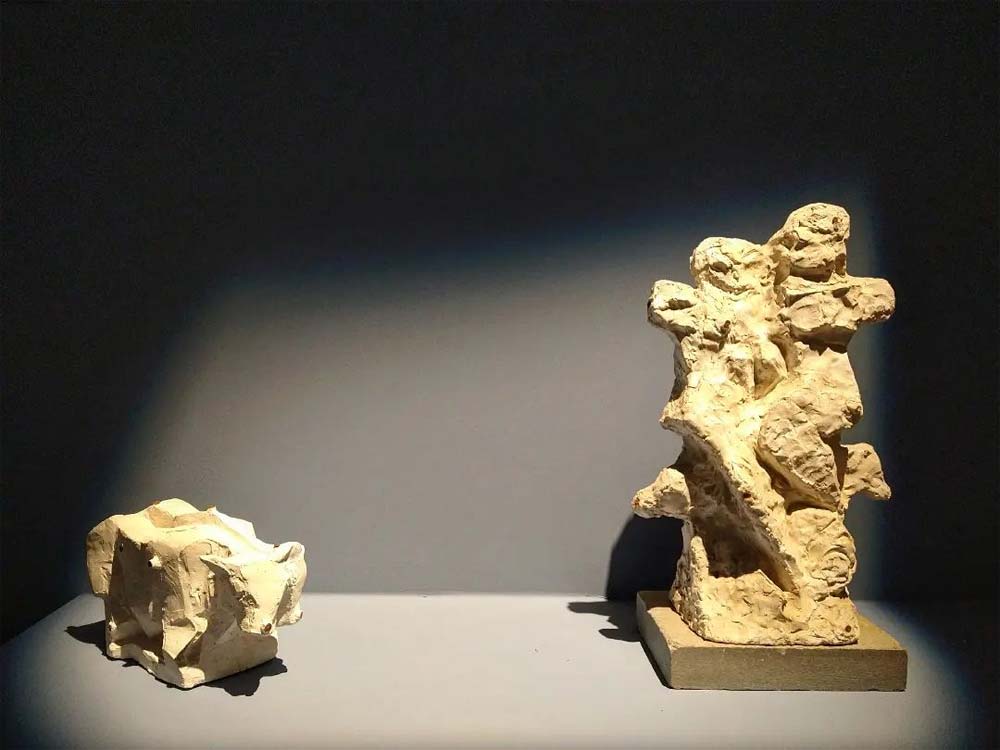
The idea behind the exhibition is that each sketch tells a story: some preserve autograph notes by the artist, or indications for the use and consumption of the artisans, while a special case is the model of the work The Birth of Venus by Igor Mitoraj, which contains a graphite drawing by the Polish artist’s own hand, a unique case in the panorama of his works, both in marble and bronze. Some of the works created from the sketches are now on display in the Pietrasanta International Sculpture Park, but the majority have found homes in squares, parks, and public or private collections around the world. Niki de Saint Phalle’s Pregnant Nana is in Washington, D.C., at the National Museum of Women in the Arts, while Dani Karavan’s decorative panel is on display in monumental size at the Israel Diamond Exchange in Ramat-Gan, Israel, and again the bronze depicting the Birth of Venus by Igor Mitoraj is in the collection of the Regional Council of Tuscany, and was loaned for the exhibition, where it is displayed not far from its sketch.
“Founded in the seventeenth century, the Uffizi’s collection of self-portraits,” stresses the director of the Florentine museum, Eike Schmidt, “is unique also because it continues to be increased even today, thanks to purchases of works from the past and donations from important contemporary artists: it is precisely on this side that the Pietrasanta exhibition focuses, demonstrating that attention to today is essential to the life of the museum.”
“The Museo dei Bozzetti,” says Alberto Stefano Giovannetti, mayor of Pietrasanta, “is not a simple container, but lives on continuous relationships, thanks to the strong interaction it has established with its territory of reference, represented first and foremost by Pietrasanta, but also by the broader Apuo-versiliese area, with international echoes and reflections. Here there is a great choice of fine raw material, marble, and master craftsmen of the highest level for which artists from all over the world come to Pietrasanta.”
The exhibition can be visited Monday through Friday from 3 to 7 p.m., Saturdays, Sundays and holidays from 10 a.m. to 1 p.m. and 3 to 7 p.m.
 |
| Uffizi Diffusi arrives in Pietrasanta: sketches and self-portraits on display |
Warning: the translation into English of the original Italian article was created using automatic tools. We undertake to review all articles, but we do not guarantee the total absence of inaccuracies in the translation due to the program. You can find the original by clicking on the ITA button. If you find any mistake,please contact us.




























